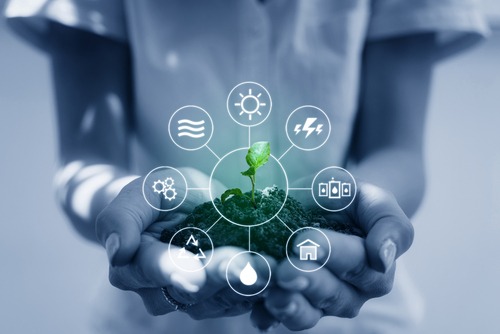Biden officials issue guidance on clean energy tax credits for energy communities

The U.S. Treasury Department and Internal Revenue Service (IRS) provided additional information about the bonus tax credits under the Inflation Reduction Act for clean energy projects and facilities located in so-called energy communities.
Energy communities are those that have historically generated power through various different means. The energy community bonus for the Investment Tax Credit (ITC) and the Production Tax Credit (PTC) is available to developers that locate projects in historical energy communities. Through this bonus, developers can receive an additional 10 percentage points on top of the Investment Tax Credit and an increase of 10 percent for the Production Tax Credit.
“President Biden’s Inflation Reduction Act is driving investments in new clean power to communities that have been at the forefront of energy production, helping to create jobs and lower utility bills,” U.S. Deputy Secretary of the Treasury Wally Adeyemo said. “Today’s guidance provides clarity to companies planning investments and should help those investments move forward.”
Under the Inflation Reduction Act, there are three ways an area can qualify as an energy community:
1. Coal closures: A census tract or directly adjoining census tract where a coal mine closed after 1999 or a coal-fired electric generating unit was retired after 2009 qualifies as an energy community.
2. Statistical Areas: The bonus is also available to areas that have significant employment or local tax revenues from fossil fuels and higher than average unemployment. To qualify for the bonus, an area must have, or had, at least 0.17 percent direct employment, or at least 25 percent local tax revenues related to the extraction, processing, transport, or storage of coal, oil, or natural gas, as well as an unemployment rate at or above the national average unemployment rate for the previous year.
3. Brownfields: Brownfield sites, which are properties contaminated by hazardous materials or other pollutants, also qualify as energy communities.
The guidance also permits offshore wind facilities to attribute their nameplate capacity to additional property. Specifically, this provision is related to supervisory control and data acquisition system (SCADA) equipment that are owned by the owner of the offshore wind project and are located in eligible ports. In addition, it clarifies that where a project has multiple points of interconnection, those projects may now look to any land-based power conditioning equipment up to those points of interconnection for purposes of determining energy community status.
The American Clean Power Association (ACP) is pleased with the new guidance.
“The Biden Administration’s announcement today is a big win for communities in the clean energy transition. This guidance will spur the growth of offshore wind by encouraging significant private sector investments and new jobs in historically disadvantaged communities,” ACP CEO Jason Grumet said. “Including ports in this bonus tax credit will revitalize hard working communities that have long been engines of economic growth. The Administration’s action is yet another example of the economic opportunities created by the clean energy transition.”
Guidance was first issued in April 2023, but this new guidance addresses issues raised by stakeholders since then.
